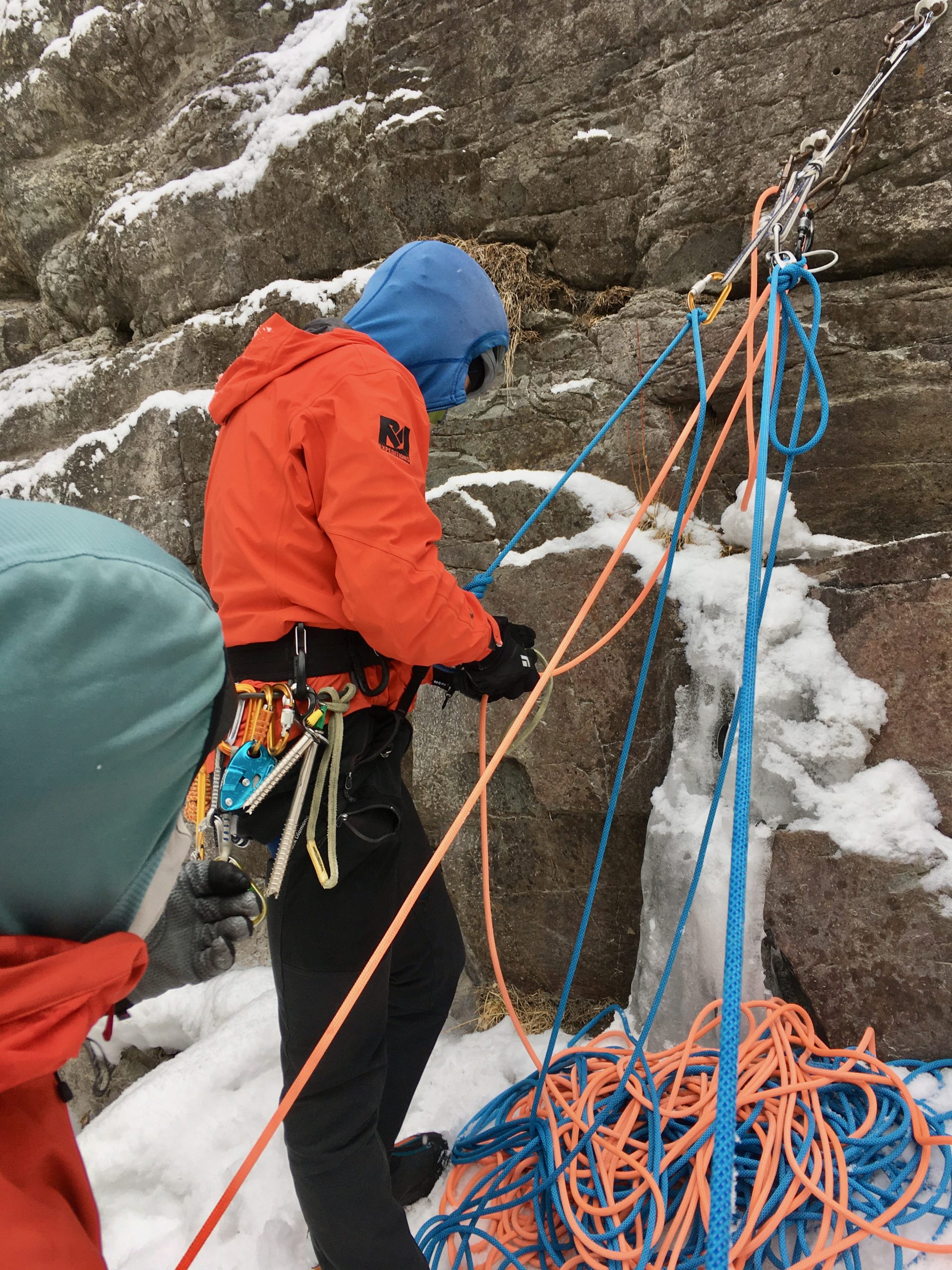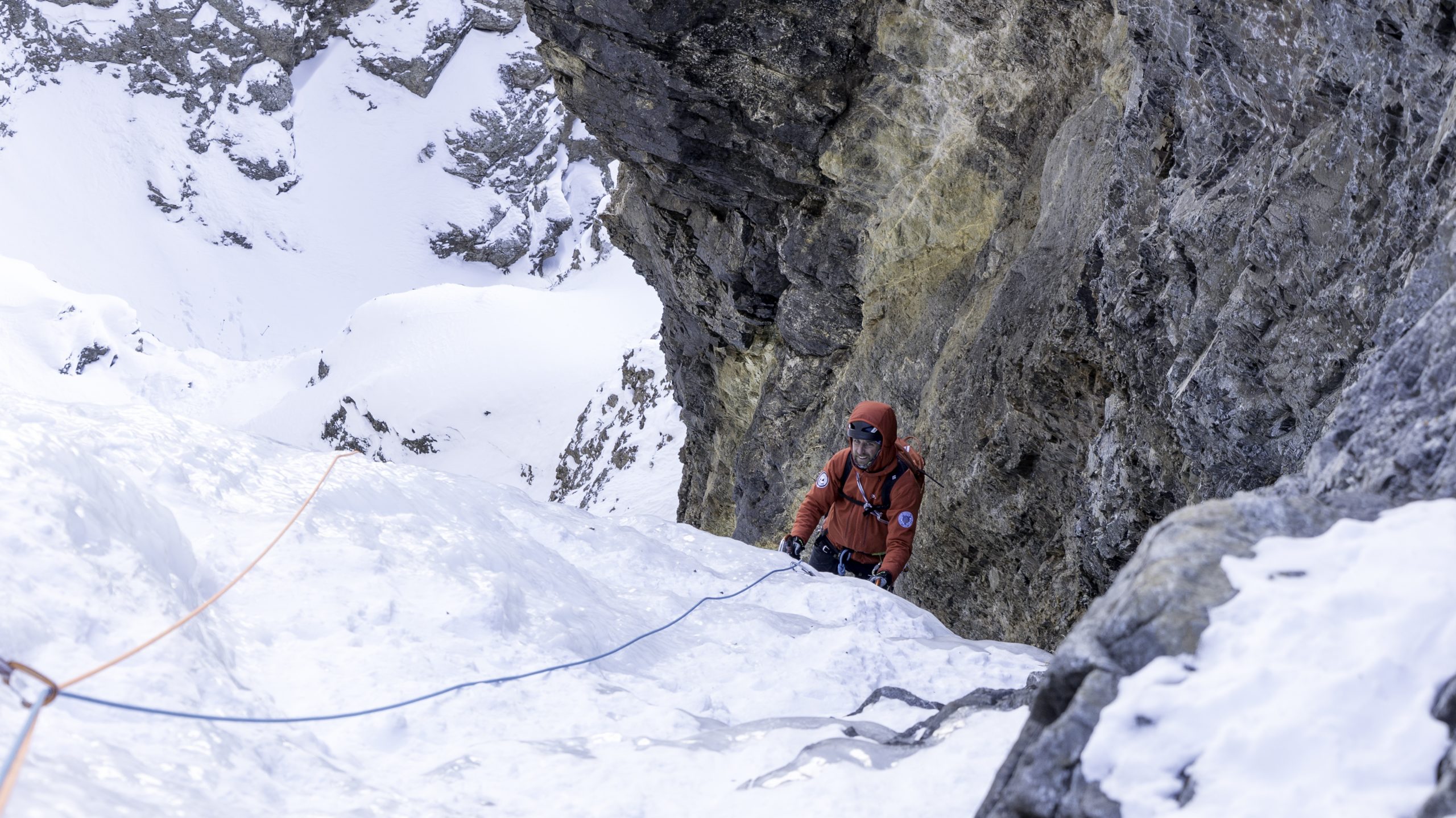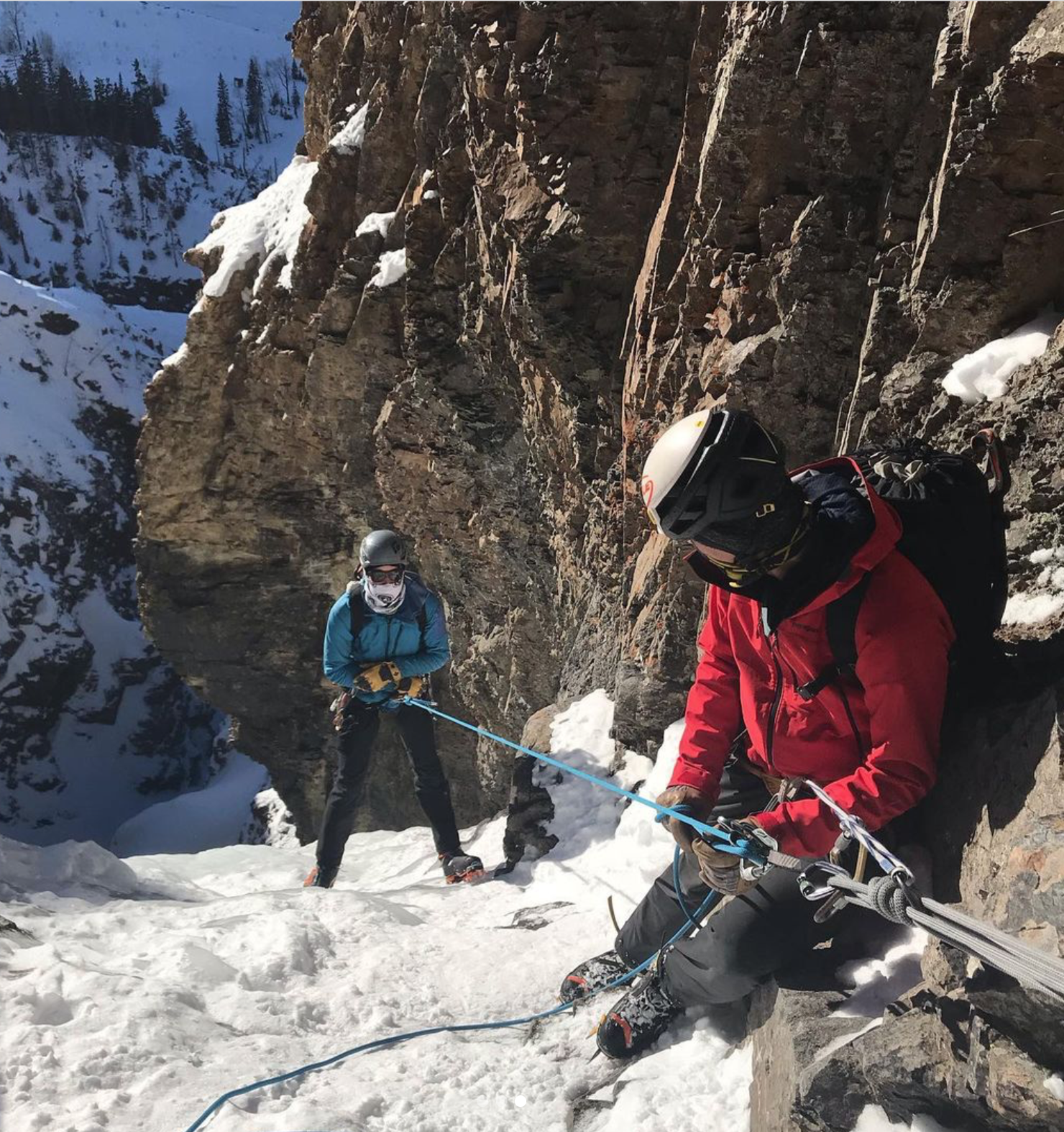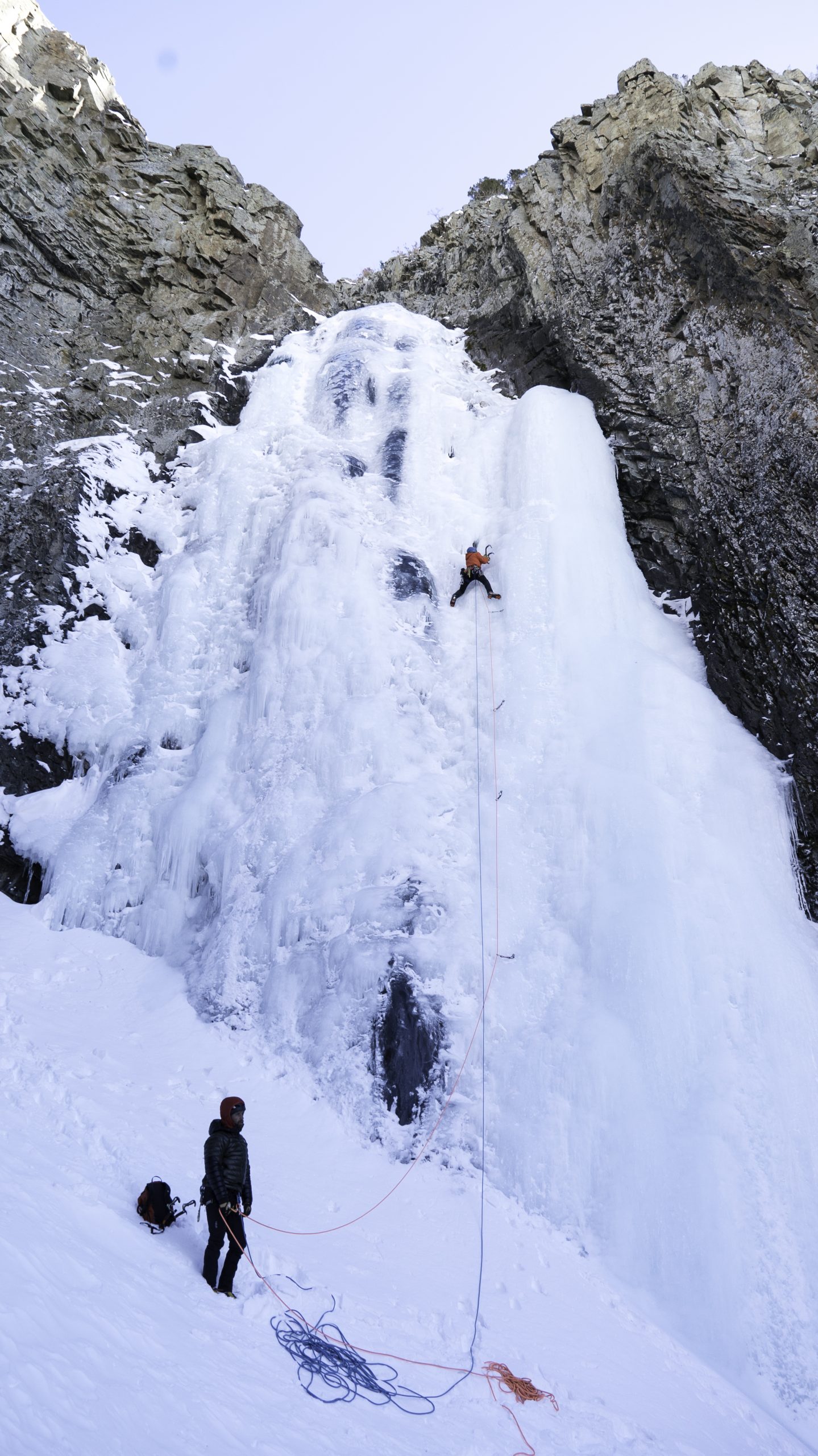2021 Salewa Scholarship | Matt Zia

The last time I climbed ice in the Ouray area I was 23 years old, cutting my teeth on the bigger routes outside the Ouray Ice Park. In the six years since those formative experiences on routes like Stairway to Heaven, I made my way north to Bozeman, MT and have had the good fortune to climb ice all over the Greater Yellowstone Ecosystem. From backyard adventures in Hyalite Canyon, to sagebrush wanderings in Cody, WY, I’ve been able to build on the foundational skills I first learned swinging ice tools in the Ice Park and slowly working my way through the grades and learning the rhythm of the mountains in winter.
As I drove back south toward the San Juan Mountains from Bozeman, I balanced the competing emotions of returning to a formative climbing area with the added experience of years of climbing, with the nerves

that accompany any formal (and many informal) course experiences. But upon seeing the skyline of Mt. Sneffels and Cimarron Ridge glowing softly in the pre-dawn light, I felt at ease knowing the aspects of the course I could control and open to learning in the uncontrollable elements.
As with all other aspects of our lives, AMGA courses have been upended by COVID-19 and the subsequent adjustments to social interaction, public health, and operational protocols. I started the course briefing off by finding some computer access outside the public library, and after a lengthy intro briefing meeting via Zoom, we found space that afternoon to meet in the Ouray Ice Park, ultimately our only time spent in the park.
After the afternoon in the Ice Park dedicated to systems review and a bit of climbing to relax the nerves, we split for the evening ready to meet up in the morning and explore the backcountry ice around Ouray.

The next morning, after dodging mining trucks on the road, we spent the day climbing up Camp Bird Road. I had a major feeling of déjà vu as I launched up the route Choppo’s Chimney into a building snow storm. The last time I climbed on Camp Bird I ended up soaking wet and shivering after a similar snow storm. This time, I arrived at the top warm and dry, and ready to implement new techniques with an eye towards style, rather than survival.
There’s an old adage about boxing that the brutality of the sport disguises the artistry. I often feel the same about ice climbing. Between bouts of shivering, dancing between dodging ice chunks, and swinging medieval-esque tools to make upwards progress, the casual observer may miss the artistry of a highly skilled ice climber weaving their way up a steep pillar of ice. However the observant eye pieces together the elegance of a graceful ascent and descent, especially one utilizing V-threads to leave no trace of passage up the ephemeral formation.
Over the remaining three days of the ice instructor course we strove to climb routes in style. We made our way around the Ouray area climbing routes that I once considered well outside my comfort zone. Despite being away for so long, I felt like I was at home once again in the San Juans. As we made our way from the Dexter Creek Slabs above Ridgway to the huge ice falls outside of Silverton and Eureka, I felt that I was approaching the mountains as an old relative, and my old relative granted me passage.

With the exception of the afternoon snow shower on Camp Bird Road, we were lucky to wake up each day to clear skies, calm wind, and warm temperatures. Approaching the course with experience and comfort moving through the mountains gave me the mental bandwidth to both marvel at the surroundings, absorb and apply new technical systems, and engage in high level conversations about risk management, terrain considerations, and client care. Major themes included use of split rope technique for managing two followers simultaneously, the fixed point belay for belaying a leader on multi-pitch ice, and use of lowers to efficiently and securely move clients through technical descents.

We closed the course with a smooth and stylish ascent and descent of the Charmin Tube above Ouray. Our group moved efficiently and spent most of the day laughing and marveling at the water-sculpted canyon walls above us. As we debriefed the day in the sunshine, I thought about how those of us who work in the mountains have an outsized responsibility to travel through the landscape in a manner that reflects the gifts the mountains give back to our communities.
Since working in the guiding profession, I’ve primarily focused my energy on the educational side of the career. I run a program for youth to learn how to move consciously and intentionally through the mountains, developing skills to transfer to their lives in the valley. Beyond the continuing training and professional development of AMGA courses, my participation gives me the chance to be a student and push my own comfort zone. I believe the best teachers are the ones who never stop learning themselves. Working through the AMGA Mountain Guide Program is one of the ways in which I continue to seek opportunities to challenge myself and maintain the learning mindset.

I’m grateful for the support from the AMGA and Salewa to make my participation in the Ice Instructor Course possible and give me the chance to always be a student of moving through the mountains with style and grace.












